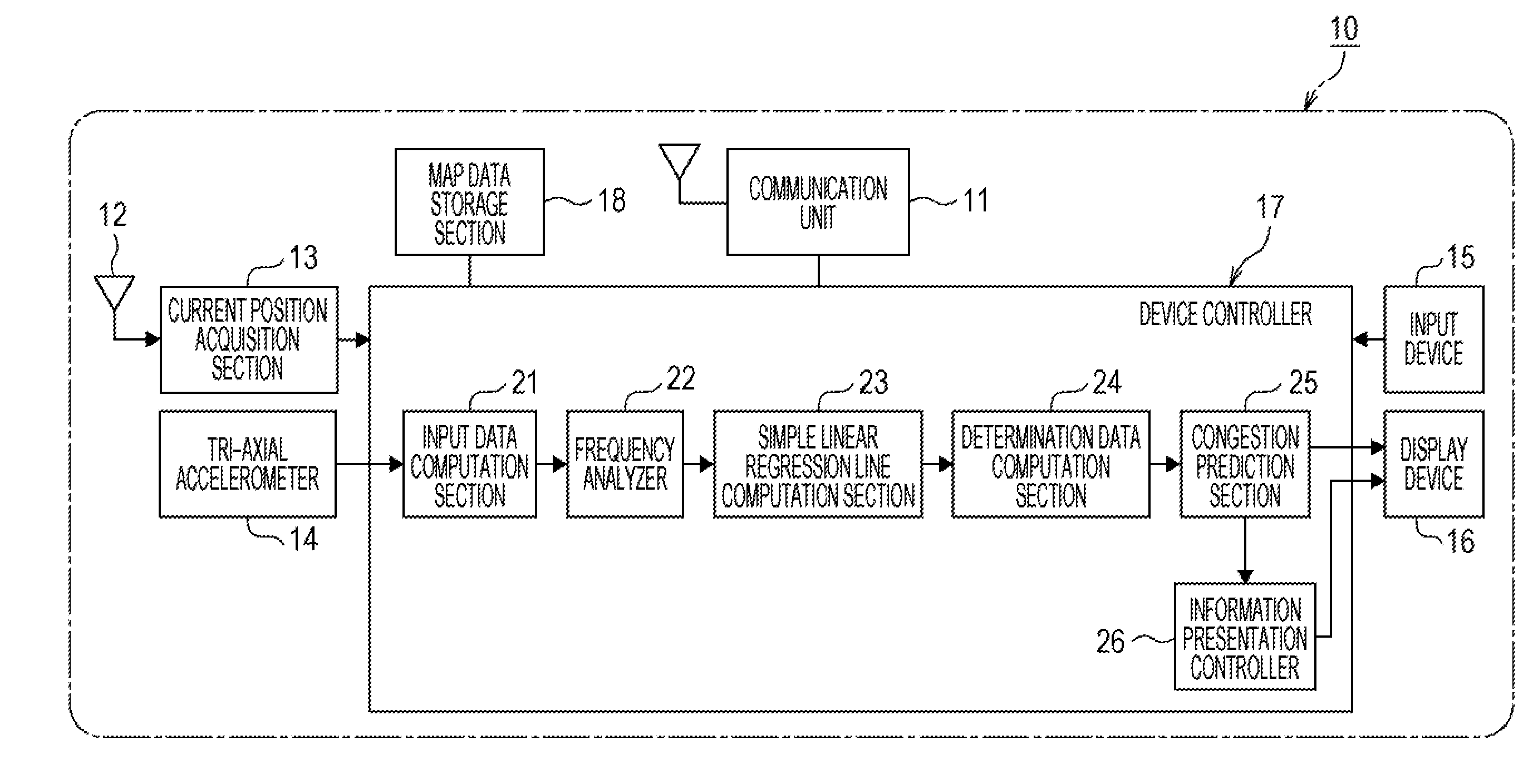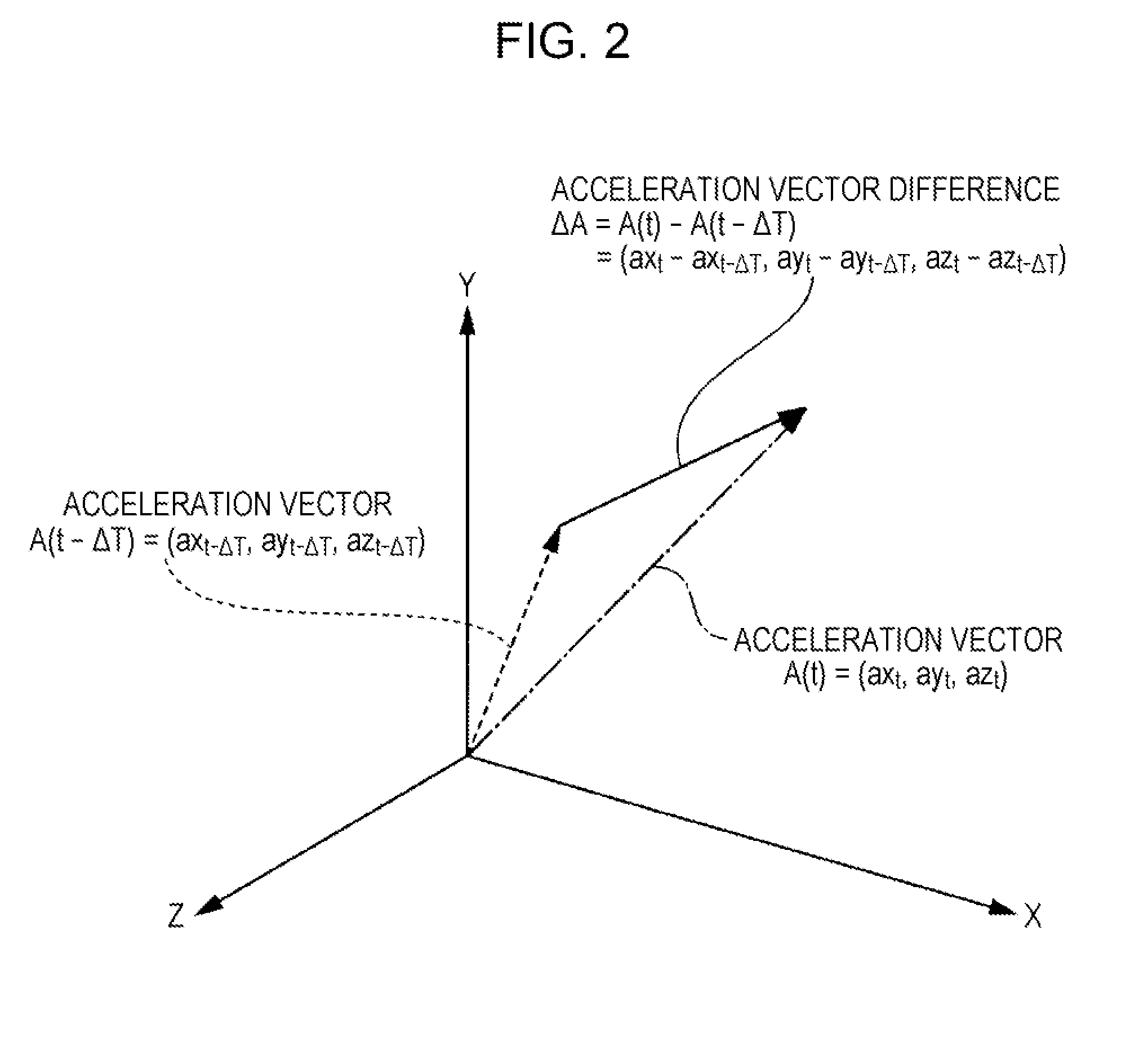Driving support method, program, and driving support device
a technology of driving assistance and program, applied in the direction of road vehicle traffic control, traffic detection, instruments, etc., can solve the problems of vehicle change, need to be given, and many vehicles traveling in the lane deceleration, so as to reduce the disruption of traffic flow, shorten the in-car time, and increase the average speed of overall traffic flow
- Summary
- Abstract
- Description
- Claims
- Application Information
AI Technical Summary
Benefits of technology
Problems solved by technology
Method used
Image
Examples
Embodiment Construction
[0036]Explanation follows regarding an embodiment of a driving assistance method, program, and driving assistance device of the present application, with reference to the appended drawings.
[0037]A driving assistance device 10 of the present embodiment is, for example, a mobile terminal carried by an occupant of a moving body, such as a vehicle, or a detachable information system installed in a moving body, such as a vehicle, or an electronic device such as a navigation system preinstalled in a moving body, such as a vehicle.
[0038]The driving assistance device 10 is capable of two-way wireless communication with external devices over a communication network such as an ad hoc mode network, or an infrastructure mode network. The driving assistance device 10 performs, for example, two-way communication with is driving assistance device 10 of another vehicle using inter-vehicle communication in an ad hoc mode. The driving assistance device 10, for example, performs two-way communication ...
PUM
 Login to View More
Login to View More Abstract
Description
Claims
Application Information
 Login to View More
Login to View More - R&D
- Intellectual Property
- Life Sciences
- Materials
- Tech Scout
- Unparalleled Data Quality
- Higher Quality Content
- 60% Fewer Hallucinations
Browse by: Latest US Patents, China's latest patents, Technical Efficacy Thesaurus, Application Domain, Technology Topic, Popular Technical Reports.
© 2025 PatSnap. All rights reserved.Legal|Privacy policy|Modern Slavery Act Transparency Statement|Sitemap|About US| Contact US: help@patsnap.com



